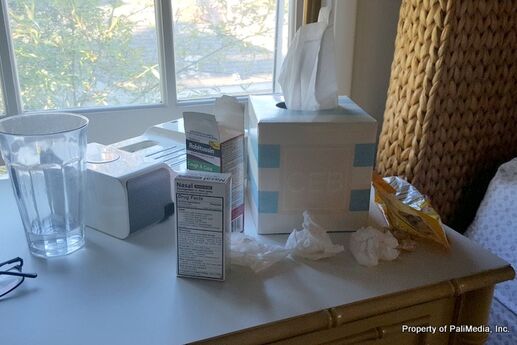Bouncing Back After Being Sick
If you're getting over being under the weather, it can be tempting to put the pedal to the metal on the road to recovery. But if you really want to feel better, proceed with caution. Here's how to bounce back without risking a relapse.
1. Rest up.
Resist staying up past prime time when you're on the mend, suggests Dr. Mark Anderson, a family physician in Southlake, Texas."An early bedtime is more effective than trying to catch up on sleep in the morning, because the deep sleep you get before 2 a.m. is worth twice as much as sleeping in," he says.
Even when you're awake, take it easy. You may feel well enough to go back to work, but that doesn't mean you're ready to go out on the town. Instead, stay in and read, catch up with a friend over the phone or watch a DVD. Still suffering from a stuffy nose? Soak in the tub. Not only is it relaxing, but the steam may act as a decongestant.
2. Eat right.
Though it's often easier to just grab something quick when you're trying to catch up on the things you missed while you were sick, eating well can help you get completely healthy and provide you with a much-needed energy boost. Follow these tips:
- Stay hydrated, which helps flush out any excess mucus from a cold or flu and replaces fluids lost as a result of nausea or diarrhea.
- Stick to easily digestible foods like rice, dry toast, saltines, bananas and apples if you're just starting to eat again after a gastrointestinal bug.
- Avoid dairy, since it thickens lingering mucus and can exacerbate nausea.
- Eat plenty of fresh fruits and veggies: Their antioxidants boost your immune system, which can help ward off new or secondary infections.
3. Work it out.
As long as you're no longer running a fever, says Anderson, you can start exercising again. In fact, not only will the heat your body generates during exercise help keep any leftover mucus moving, but the endorphins produced can speed your recovery.
That said, listen to your body and don't take on too much too soon."Scale back your workout," suggests Anderson."If you're used to running 3 miles a day, try walking on a treadmill for 30 minutes instead."
4. Keep it to yourself.
Did you know you're contagious for up to a week after coming down with a cold or the flu? Even if you're feeling better, continue to follow the habits that can help prevent illness from spreading:
- Keep a small bottle of antibacterial gel on hand and use it before touching your children.
- Wash your hands with soap and water for at least 15 seconds after using the bathroom, after blowing your nose, before eating, and before and after handling food.
- Have someone else cook (or order in) until you've been better for a few days. If that's not possible, wash your hands thoroughly before and after preparing food.
- Cough or sneeze into the crook of your elbow, not your hand.






